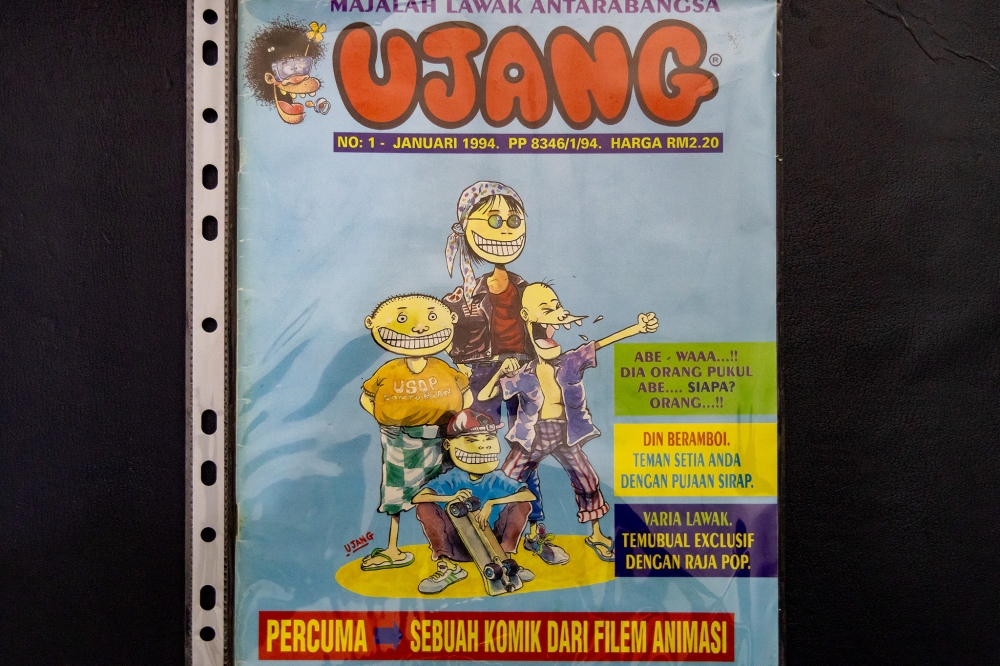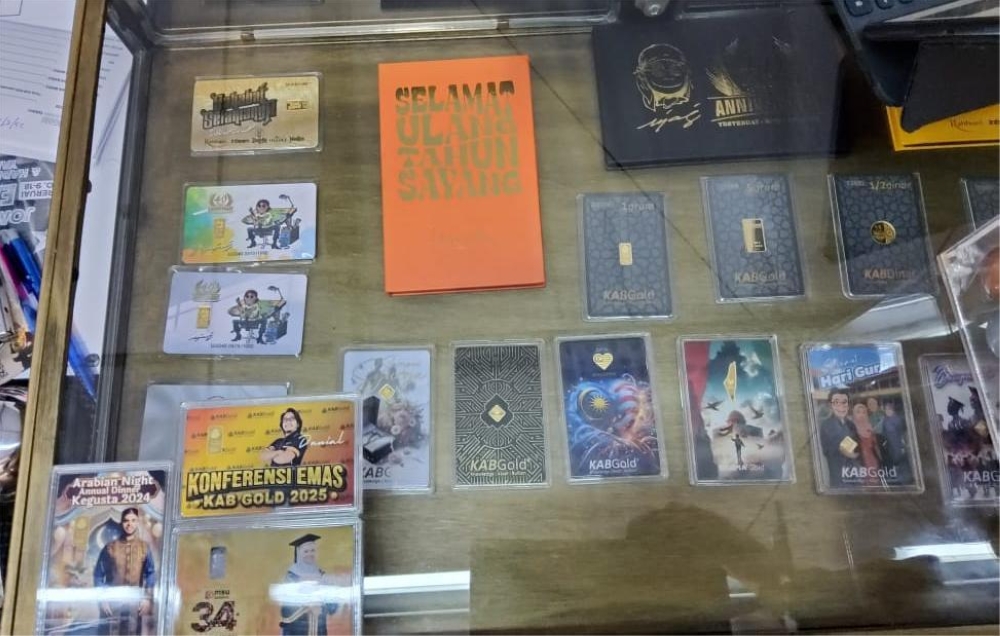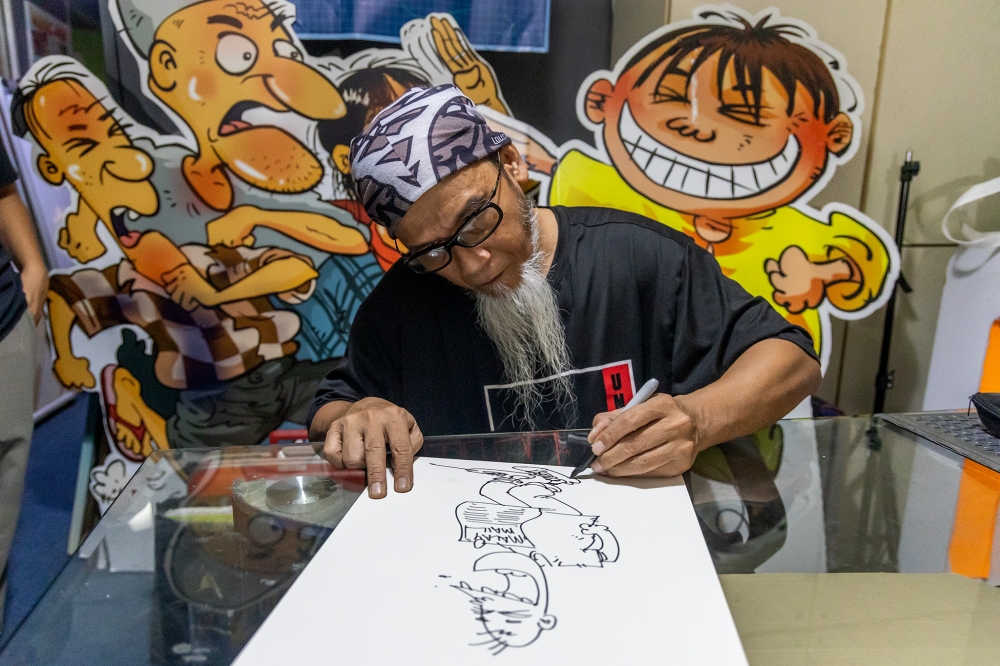Ujang’s next chapter: How Malaysia’s cartoon pioneer reinvented himself after losing his creations
KUALA LUMPUR, July 6 — In the pre-social media landscape of 1980s and '90s Malaysia, entertainment often came from television cartoons, outdoor activities, and the simple joy of a good comic book.
Amidst international titles, one local comic magazine truly resonated nationwide, its name still fondly remembered by those who grew up in that era: Ujang.
This iconic magazine was brought to life by Malaysian cartoonist Ibrahim Anon, 59, known widely by his pen name, Ujang. A familiar name in the local cartoon scene, he was celebrated for his humour, storytelling, and art that distinctly highlighted Malaysian identity.
The magazine famously introduced characters like Usop Sontorian, later adapted into a beloved animated series co-created by Ujang himself and the late Kamn Ismail. The popularity of Usop Sontorian, and later Keluang Man, is a testament to their cultural impact — as those who grew up in that period would likely attest.
“Even today, many decades later, when I attend book exhibitions or pameran kartun (cartoon exhibition) events, people still remember me as the creator of Usop Sontorian. It’s not just the adults who grew up with it — even children from this generation know these characters,” Ujang said.

Decades have passed since the series stopped airing and the Ujang magazine ceased publication.
The journey has not been easy for the cartoonist, who has faced bankruptcy, lawsuits, and the loss of rights to his past creations, which are now registered under different ownership.
“Back in 1993, none of my works were registered under the Copyright Act 1987,” Ujang recalled. “I was naive and unaware of how to protect my intellectual property, and there wasn’t much awareness about it at the time.”
Ujang 2.0: Life after the limelight
Fast forward to 2025, Ujang has since explored diverse ventures. He partnered with MCT Official to organise Monsoon Casting, a fishing tournament held during Malaysia’s monsoon season, typically in Terengganu.
He has also ventured into the gold bar business, collaborating with KABGold to produce limited edition 0.5g and 1g gold bars featuring his artwork.
Despite branching out, Ujang’s cartoonist spirit remains undiminished.
“I still do the artwork for banners at the Monsoon Casting events,” he said. “The same goes for my venture into gold bars; if it involves any artwork, I’ll be the one drawing it.”
He has also produced a five-episode anti-drug animated short titled Lebih Baik Cegah: Adiwira Penegak Keamanan.
Today, he continues to draw and create animations, primarily using software like Autodesk, sharing his art on Facebook and TikTok — not as a business, but as a personal passion.

Then vs Now: Ujang on the evolution of Malaysia’s comic scene
Ujang observes a growing wave of young Malaysians pursuing careers in cartooning.
“There were many aspiring cartoonists in the past, but now there are even more — because they have the facilities,” he noted. According to Ujang, digital platforms have opened new avenues for artists to build careers and publish their work independently.
“Back then, artists had the talent and the passion, but they often lacked the platform. The only way to get a comic published was through a traditional publisher, and only if it was accepted,” he explained.
When asked for advice for today’s local comic artists, Ujang humbly demurred. “I believe young people today are so knowledgeable that it’s no longer the older generation guiding the young, but often the other way around.”
The Ghibli Effect: Why Ujang thinks anime still rules 2D for Malaysians
Ujang personally feels that when it comes to 2D animation, Malaysians are often more drawn to Japanese anime, particularly the works of studios like Studio Ghibli.
While 2D animation is still loved, he notes that many local animators have shifted their focus to creating 3D animation.

“It’s not that the appreciation for 2D has vanished — rather, the success and opportunities in 3D animation have encouraged many to pursue it instead,” he explained.
According to Ujang, very few local animators now specialize in 2D, with 3D having become the dominant medium, partly due to limited opportunities in traditional 2D.
However, he remains optimistic, stating that today’s Malaysian animation has the potential to reach Hollywood standards.
Still in the picture
In addition to his artistic pursuits, Ujang — no stranger to the film industry, having appeared in the 1996 film Yes Tuan — is set to play a small role in the upcoming live-action series Metaloka by Anithink Studios, scheduled for release later this year.
When asked if he would ever return to being a full-time cartoonist, he replied, “I’m tired and in a very happy place now, so I would only continue drawing for fun.”
They say you should never forget those who opened doors — and Ujang was undeniably one of them.
He helped pave the way for Malaysia’s comic and animation scene, and he remains just as excited to see where it goes from here.
Get Insurance Now



